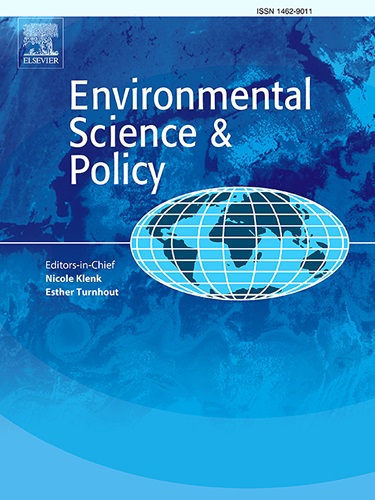决策支持工具在干旱管理中的作用:来自荷兰的见解
IF 5.2
2区 环境科学与生态学
Q1 ENVIRONMENTAL SCIENCES
引用次数: 0
摘要
干旱对整个欧洲大陆的影响越来越大。随着欧洲许多地区干旱的频率和强度上升,实施有效的适应和缓解干旱战略变得越来越重要。然而,目前尚不清楚随着干旱严重程度的增加,在干旱管理中如何使用各种工具。本研究探讨了决策支持工具(DSTs)在荷兰干旱管理战略和操作中的作用。通过对国家和地区水务局的调查,本研究表明,随着干旱严重程度的增加,水资源管理者越来越依赖于实地测量、数据信息系统(DISs)、利益相关者咨询和立法。天气预报和专家知识在所有干旱管理阶段都很重要。尽管DISs的使用随着干旱严重程度的增加而增加,但水文模型的使用却没有遵循同样的趋势。DISs通常包含水文模型,揭示了这些模型的“隐藏”用途。它们不是作为建模者的“关键工件”,而是在干旱管理的高级阶段成为更广泛的数据系统的积极“参与者”。所有这些方面都影响模型使用中的关键责任,包括适当性和可转移性、可再现性和透明度。这些因素对于弥合科学与政策在发展和应用技术方面的差距至关重要。本文章由计算机程序翻译,如有差异,请以英文原文为准。
The role of decision support tools in drought management: Insights from the Netherlands
Droughts have an increasing impact on the entire European continent. As the frequency and intensity of droughts rise in many parts of Europe, the implementation of effective drought adaptation and mitigation strategies becomes increasingly important. However, it is not known how diverse tools are used in drought management with increasing drought severity. This study explores the role of Decision Support Tools (DSTs) in strategic and operational drought management in the Netherlands. Through a survey among national and regional water authorities, this study shows the increasing reliance of water managers on field measurements, Data Information Systems (DISs), stakeholder consultation, and legislation with increasing drought severity. Weather forecasts and expert knowledge remain important throughout all drought management phases. Despite the increased use of DISs with drought severity, the use of hydrological models does not follow the same trend. DISs, which often incorporate hydrological models, reveal a ‘hidden’ use of these models. Rather than serving as ‘key artifacts’ for modelers, they become active ‘participants’ in broader data systems during advanced phases of drought management. All these aspects influence key responsibilities in model use including appropriateness and transferability, reproducibility, and transparency. These factors are critical to consider when aiming to bridge the gap between science and policy in the application and development of DSTs.
求助全文
通过发布文献求助,成功后即可免费获取论文全文。
去求助
来源期刊

Environmental Science & Policy
环境科学-环境科学
CiteScore
10.90
自引率
8.30%
发文量
332
审稿时长
68 days
期刊介绍:
Environmental Science & Policy promotes communication among government, business and industry, academia, and non-governmental organisations who are instrumental in the solution of environmental problems. It also seeks to advance interdisciplinary research of policy relevance on environmental issues such as climate change, biodiversity, environmental pollution and wastes, renewable and non-renewable natural resources, sustainability, and the interactions among these issues. The journal emphasises the linkages between these environmental issues and social and economic issues such as production, transport, consumption, growth, demographic changes, well-being, and health. However, the subject coverage will not be restricted to these issues and the introduction of new dimensions will be encouraged.
 求助内容:
求助内容: 应助结果提醒方式:
应助结果提醒方式:


